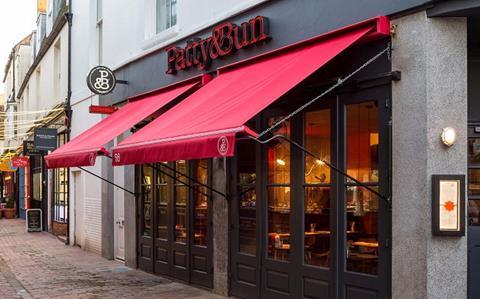Arguably, the casual dining market peaked at the end of 2015/beginning of 2016. In the year that followed, we saw a constant decline in the property market, followed by a domino of CVAs across the sector in 2018.

This did, however, reveal more fluid opportunities in the market. Both landlords and operators are now more aligned and recognise the prevailing market. That said, we haven’t crossed this rocky road just yet.
Regrettably, I predict we will see the watershed of a CVA that fails to save a business, or perhaps even more than one. The controversial method of saving an operating business can be categorised into a traffic light system; reds are completely dumped, amber given a reduced rent, and green maintaining the existing status quo. This is all carried out at great cost as a final life saver, often backed up with conditional funding once complete. But a failure of this type will question the process altogether.
In this current climate, we have seen many operators evolving their concepts to work in smaller spaces, thus minisming their capital expenditure, rent and rates liabilities. With the exception of prime central London, there is new momentum in the market for units up to 2,000 sq ft with a sweet spot of rents up to £100,000. This movement to minimise the model will extend even further into 2019, and I predict a mini-me trend of ultra-compact units.
Ghost growth
Even with a focus on footfall figures, this line of thinking means that interesting areas of regeneration that may otherwise have been overlooked are now on the radar. And in fact, most areas within Zones 1 and 2 become viable, so long as they are located close to a Tube station or widely recognised pitch. This is further backed up by the quantum of sales through takeaway delivery, so the standalone turnover required is softened.
In addition, if the operator is not yet prepared to commit to bricks and mortar, the delivery model provides the opportunity for a ghost or test kitchen. Fully fitted kitchens for rental purposes have become more mainstream, enabling operators to feel out a catchment area with far lessened risk.
The biggest winner here is the consumer. I am confident that in the year ahead more people will be spoilt for choice than ever before, especially further afield. The regions are also benefiting from the softening of the market, with existing and newly funded operators expanding with this smaller model. The likes of Franco Manca, Honest Burgers and The Real Greek will continue their successful expansion outside of last year. In 2018, we secured a prime site in Brighton for Patty & Bun, the brand’s first outside of London, and late last year we also acted on a deal that saw Rosa’s Thai take their first location outside of London at Bluewater in Kent.

Looking elsewhere in the hospitality industry, pub and bar operators are trading stronger than ever, despite rarely making the headlines. Key leisure and hospitality investors, such as Imbiba with their suite of brands, Youngs and ETM to name but a few, are not shy in taking larger sites.
And what about Brexit? 2018 was dominated by bigger issues such as rent reviews, rates, over supply, exchange rates and human resource. Up until now, Brexit has been somewhat background noise. As we enter 2019, however, it is hard to believe some operators will not be thinking twice before committing to sites, particularly at the highest end of investment. Richard Caring, for example, was recently quoted in a rate interview saying he was pausing on any major acquisitions until the political landscape is clear.
The year ahead will see mixed storms with sunny intervals – be sure to take clothes for all seasons.
Ted Schama, managing partner at Shelley Sandzer





























No comments yet